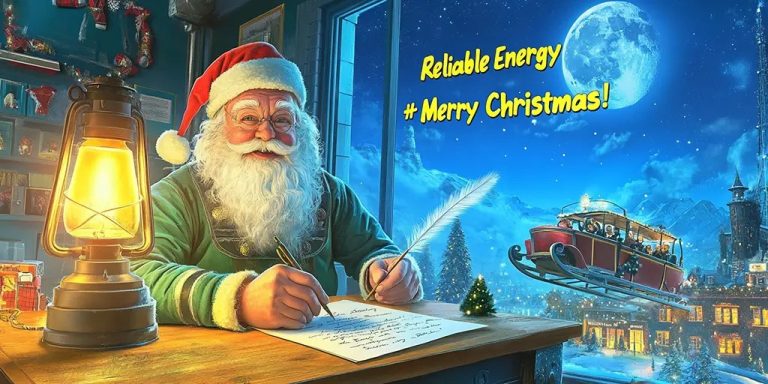It was a cold and windy night in the Arctic, and Santa Claus was in his studio, looking at his “Naughty List” with concern. This year, however, what he’s worried about isn’t giving gifts; how He is willing to deliver them. After all, the Arctic has turned green.
Transition to “sustainable” solutions

It all started when the Elf Alliance convinced Santa to modernize his business. They were pressured by letters from children demanding a “greener Christmas”. The old coal-powered magic furnace that kept Santa's sleigh flying reliably for centuries is gone. Instead, the Arctic now has the following characteristics:
- Number of lines solar panelsparkling in the arctic sun (when it appears).
- one wind farm Tall turbines spin precariously in the icy wind.
- Santa discovers a new fleet of “green” electric sleigh prototypes are slow and unreliable.
At first, the idea seemed exciting. “Think of the headlines!” Mrs. Claus said. “Santa Claus saves the planet!” But reality isn't that magical.
As Christmas approaches, questions mount

The trouble started early. this solar panel This approach proves virtually useless during the Arctic winter, when darkness dominates for months on end. Wind turbines? They worked great—until they failed. The ice on the blades freezes them solid. Santa called in an engineering team of elves to de-ice them, but within hours they were frozen again.
then Battery powered sled testing. Santa found that hauling millions of toys in sub-zero temperatures drained batteries faster than a reindeer could say “Rudolph.” Just 30 minutes into the flight, the sleigh stopped mid-air, leaving Santa stranded on the iceberg until Mrs. Claus sent a reindeer to pick him up.
“What's wrong with the magic?” Santa Claus complained as he thawed his frozen beard by the fire.
Energy poverty issues spark seminar

Meanwhile, the Arctic factory is facing its own crisis. The elves, accustomed to working around the clock, found themselves rationing electricity. Wind and solar systems cannot keep up with demand, so the workshop is dark when there is no wind and it is cloudy. Even the chocolate fountain – a vital morale booster for the elves – must be shut down.
Production slowed and tempers flared. “If I hear one more thing about net zero, I'm quitting,” muttered Tinker, the leader of the elves.
Elves rebel

Things came to a head on December 23, when a power outage plunged the shop into darkness during the last toy assembly shift. Armed with candy canes and driven by weeks of frustration, the elves confront Santa.
“We need to get the coal stove back!” they demanded. “Or at least reindeer and a proper sleigh!”
Santa Claus, ever diplomatic, tried to calm them down. “We can't go back to the age of coal. You know what the headlines are going to say? 'Santa Claus is polluting!' “
Tinker disagrees. “You know what kids say when they don't get a gift? “Santa Claus stinks!” “
Christmas Miracle: Back to Basics

Santa realizes he has no choice. On Christmas Eve, he ordered a coal-fired stove for the first time in years. The warmth returned to the workshop, the elves cheered and the toy conveyor belt roared.
The reindeer were hooked back up to the old sleigh, which Santa had polished and repaired just in case. As Santa's sleigh takes off into the North Pole sky, Rudolph's nose lights up the way.
Santa's postscript

On December 26, Santa Claus wrote a letter to the world:
“Dear friends,
This Christmas, I learned an important lesson. While green energy has its place, it's not ready to meet the demands of global holiday operations. Reliable energy is essential to ensure everyone gets their gifts and to keep the elves warm and happy.
Let’s continue to innovate, but also be realistic about the trade-offs. After all, Christmas magic isn’t something that can be stored in batteries.
I wish you all a Merry Christmas and an energetic night!
Relevant
Learn more from Watts Up With That?
Subscribe to have the latest posts delivered to your email.
